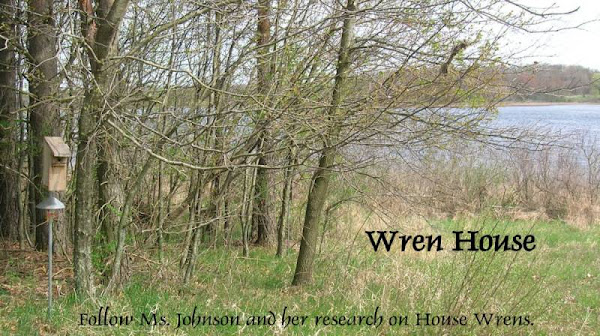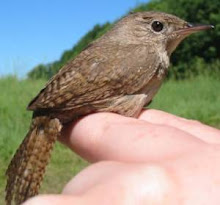
 Hurray! The picture on the left is how the nest looked yesterday. The picture on the right is the view from today. The female laid the first egg today.
Hurray! The picture on the left is how the nest looked yesterday. The picture on the right is the view from today. The female laid the first egg today. Here is a close up picture of the first egg. I labeled it number 1. House wrens only lay one egg per day. We
Here is a close up picture of the first egg. I labeled it number 1. House wrens only lay one egg per day. Welabel the eggs to determine the laying order of the eggs. They are labeled with a permanent marker. It is not toxic to the embryo (baby growing inside of the egg) and doesn't appear to have any side effects on the development of the offspring. House wrens in our population in Michigan lay 5-7 eggs on average per clutch (this is what we call the group of eggs in the nest collectively). However, they can lay up to 9 eggs per clutch but this tends to be rare.
Why don't they always lay 9 eggs if they can? That is a lot of mouths to feed. It takes lots of work, time and energy to feed the offspring. The more offspring they have, the more work they have to do. That takes a toll on their bodies. Think about all of the other things they could be doing instead of feeding 9 offspring. They could be feeding themselves, looking for their next partner, chasing away other birds from their territory etc. Also, sometimes there are just not enough resources (food) for all of the offspring. I could go on and on about the different choices, strategies and theories regarding parental care and finding the optimal number of offspring, but that should be enough for today.









